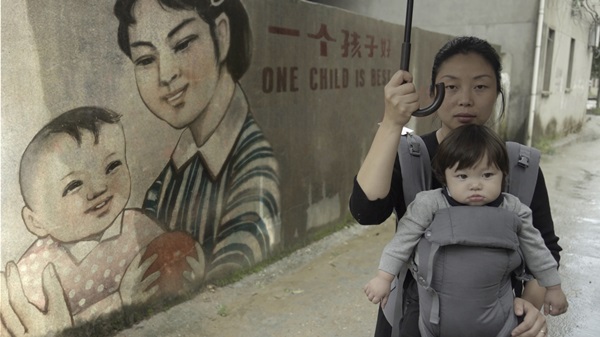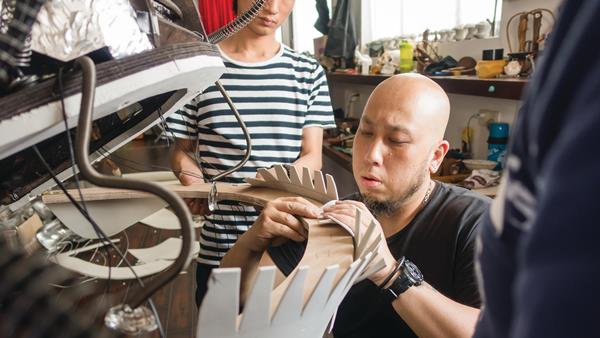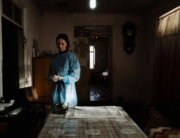In this year’s Tribeca Film Festival, there are also several documentaries about modern-day China, which has seen its own share of social upheaval of late. It may seem a million miles away from our own shores, but as a film such as American Factory reminds us, globalization is making the world an ever-smaller place. As a result, the way in which China is evolving and how it interacts with other cultures—or failing to do so—is more relevant with each passing day.
The intimate Leftover Women offers a portrait of the quest for love in contemporary China, as seen through the eyes of three women who are part of a growing class of unmarried late-20- and 30-year-olds. Educated and intelligent, each wants a relationship in which she is the equal to the man, but even in an urban metropolis such as Shanghai, that is not so easy to find. In the aftermath of China’s one-child policy, there are now tens of millions more men than women, but they are holding out for a spouse who is less accomplished or imposing than they are.
Directors Shosh Shlam and Hilla Medalia reveal the pressures that come at their subjects from all sides to marry and settle down. One woman endures endless harassment by her parents and sister during a trip back to her childhood home. Meanwhile, a recurring form of attack by the older generation is to constantly remind the younger ones about the sacrifices they made, which only adds to the women’s anxiety.
The film spends a considerable amount of time at the ground level of the dating scene, in which even the government weighs in with large-scale public events intended to match up singles, which often come across as impersonal. Here the casual misogyny displayed by the various men is cringe-worthy; they don’t seem like the greatest options for marriage. But at the same time, we observe how weary the women are of constantly putting themselves on display, waiting to be chosen and at last relieved of their perceived societal and familial responsibilities. Leftover Women has a meandering energy that befits its title subjects, who are lost in a universe of dating options, albeit for an end goal that is increasingly out of reach.
To date, the films of Nanfu Wang have doubled as social activism, and that trend continues with her third effort, the powerful One Child Nation. It kicks off on a highly personal note as the director, who recently gave birth to her first child, travels back to the village in mainland China where her family still resides, with a mind toward setting the record straight about the one-child policy. Investigative journalism and personal narrative intertwine as Wang delves into the wide-ranging repercussions that the edict—of no more than one child per-family—had on an entire country.
The first half consists of interviews with village locals, many of whom recall mothers being forced into abortions and sterilizations during the nearly four decades that the policy was in effect. (It finally ended in 2015.) There are graphic images of discarded fetuses, and the most potent conversations include those with someone who ratted out his neighbors, as well as with midwives who carried out the abortions, which included fully-formed babies. Wang fixes her camera on the subjects’ faces, daring them to make eye contact while discussing what they did. Certain interviewees display a shocking coolness, while others cannot stare back for long without looking away—hinting at consciences that aren’t exactly clear.
The film also explores how misogyny put girls at a disadvantage when one offspring per family was the maximum, and it eventually travels down the path of human trafficking. Through it all, Wang never slips too far in the background, constantly making her presence felt through the narration as well as glimpses of herself reflected in the periphery. We get the impression that she is always considering how her own life was shaped by this period of extreme policy, which in turn, adds poignancy to every step of her journey.
In the charming and ultimately moving Our Time Machine, Chinese artist Maleonn crafts a whimsical stage show inspired by a great tragedy in his life: his father’s memory loss. The film follows Maleonn and a talented crew as they assemble Papa’s Time Machine, which is to feature human-sized puppets and a story line about a father and son teaming up on a fantastical mission. Directors Yang Sun and S. Leo Chiang also regularly cut to Maleonn’s visits home, where he watches helplessly as his father slowly fades away, taking with him the son’s dream of an artistic collaboration.
Or maybe not? Over the course of the film, we get to know more about Maleonn’s father, a one-time prolific director of Peking operas, who in many ways lives on in his son. They not only share great artistic passion but a refusal to compromise on their respective visions. Indeed, behind the scenes at Papa’s Time Machine, we watch as Maleonn’s growing ambitions run the risk of devouring the entire budget before the show is even finished. We also see the wondrous results, including puppets that don’t look like people but have faces that capture the full range of human emotions and hands that are considerably more dexterous than any previously engineered.
Our Time Machine is highly effective as a coming-of-age story. Maleonn matures before our eyes, turning from a hermit with no personal life into a settled adult who wants to care for his aging parents. What keeps the film from ever getting too fluffy is our knowledge that Maleonn’s father might lose his faculties before seeing Papa’s Time Machine fully realized. However, that doesn’t stop the work, the artist behind it, or this film from becoming fitting tributes to the man.

Rob Haerr and Wong He bond on the factory floor in American Factory (Ian Cook/Tribeca Film Festival)
Finally, the insightful American Factory centers on a former car plant in Dayton, Ohio, which has been taken over by a Chinese glass manufacturer. The tone is cautiously optimistic early on as more than 1,000 unemployed ex-auto workers are put back to work, many of whom are happy just to have jobs again. But as time passes, they become increasingly discontented with the subpar working conditions, pressure to meet quotas that are unattainable under a 40-hour workweek, and pay that is less than what they made previously.
Directors Steven Bognar and Julia Reichert situate themselves squarely in the middle of two camps, following the locals, Chinese executives, and transplanted workers brought on to train them. Through access to everyone up and down the employee chain and all corners of the facility, we see two very different work cultures struggling to co-exist for reasons miniscule and profound. The most basic has to do with the language gap that leads to the American and Chinese workers often keeping among themselves. Yet there are individuals on each side who keep an open mind, leading to some of the most emotionally moving scenes.
An effort to unionize threatens to tear apart whatever degree of trust and civility has been built up in the plant, but as the filmmakers’ omnipresent camera shows, there is more than enough blame for both sides. Meanwhile, American Factory constantly reminds us that everyone, no matter where they’re from and despite their divergent motivations, shares the same basic needs for security and purpose.









Leave A Comment